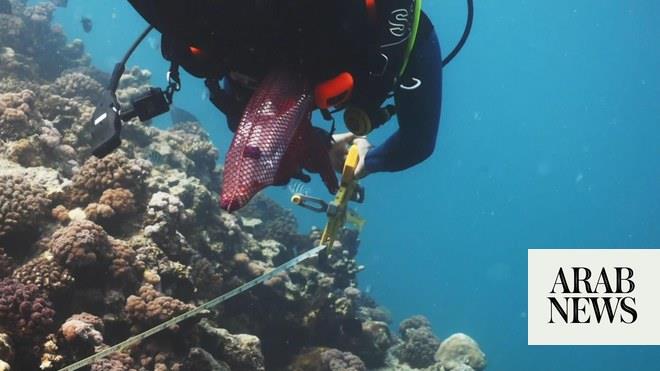
RIYADH: Saudi Arabia’s National Center for Wildlife Development has launched a comprehensive survey plan to collect basic data on the crown-of-thorns starfish groups in the Red Sea, to be used in managing the outbreak of the organism in a timely manner, and thus protecting the health of coral reefs and biodiversity.
The action plan is the culmination of a workshop held by the NCWD in late 2022, during which the threat of crown-of-thorns starfish outbreaks on the Red Sea environment was discussed, a Saudi Press Agency report says.
“The crown-of-thorns starfish is a marine organism that feeds on algae and bacteria that grow on coral reefs, but it poses a major threat to coral reef ecosystems when it becomes widespread,” the report said, citing discussions during the workshop.
“The spread of the crown-of-thorns starfish has been linked to significant damage to coral reefs in the Red Sea, especially during the breeding season, which is observed in the last two weeks of July until the first two weeks of August,” it added.
Left unchecked, the outbreak of crown-of-thorns starfish could be dangerous to coral reef health. (SPA photo)
Marine scientists and other experts who participated in the workshop have attributed the outbreak of the starfish to the disruption of the food chain and overfishing of the species that feed on it, most importantly the humphead wrasse, also known as the Napoleon fish and known locally as the tarpani.
Through its survey plan, the Saudi wildlife center aims to come up with a protocol to detect outbreaks and identify the causes, and identify the best practices and applications for methods of controlling the spread of damage, in collaboration with experts around the world.
Scientists consider the humphead wrasse (scientific name: Cheilinus undulatus ), as very important to coral reef health.
It is said that the humphead wrasse were also called Napoleon fish because of the hump on their forehead that resembles the hat of the French emperor Napoleon Bonaparte. (Photo Courtesy of WWF)
“They eat crown-of-thorn starfish and therefore keep populations of this damaging coral reef predator in check,” said a recent report of the World Wildlife Fund (WWF).
In Malaysia, the WWF helped to stop the export of the humphead wrasse and is working with other countries to do the same.
“We work with partners to repopulate protected coral reefs with wrasses that were formerly intended for sale through a buyback program with local fishermen. Since 2010, over 860 humphead wrasse have been released back into the wild,” the WWF said.
The fish is considered vulnerable to overfishing because it takes them about 5 to 7 years to reach sexual maturity and reproduce.











